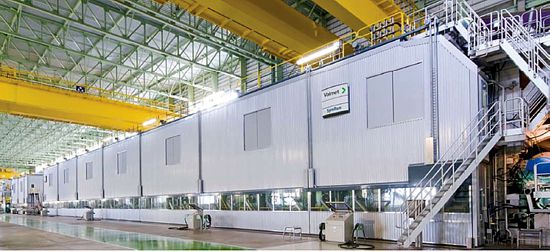Stop waste due to cockle wrinkles - avoid contributing factors
Oct 6, 2020
Cockle wrinkles are common on light weight paper machines and are a reason for waste paper. When they hit the downstream finishing processes such as calendering, the paper quality suffers and printers will reject rolls due to runnability issues as the sheet breaks at the cockle locations.
Cockling is planar distortion of paper that appears as wrinkles or ridges. Cockle wrinkles are created in the dryer section as the sheet shrinks under unrestricted drying conditions. The sheet shrinks more in the cross direction due to fiber alignment and produces cockle wrinkles oriented in the machine direction. The wrinkles are typically longer than they are wide, and are often parallel, having a wavelike appearance.
A couple of factors that contribute to the number of cockle wrinkles and their distribution are local basis weight variation and high drying temperatures.

Control of drying is important in avoiding cockle wrinkles
Local basis weight variation can occur due to changes in the forming section's approach flow and forming zone pulsations and headbox settings. Cockle wrinkles show up predominantly on lightweight, fast machines where formation, a measure of basis weight uniformity, is more difficult to achieve and there is more energy in the forming area. If there is any vibration coming from the slice or forming board, a high frequency cross direction basis weight barring pattern will be present. Cockle wrinkles will form in the low basis weight bars and can extend across the entire width of the machine. This barring pattern, if severe enough, can transfer its vibration frequency to other paper machine equipment such as calenders, supercalenders, coaters and reels.
High drying rates can also create cockle wrinkles, especially in two tiered drying groups where there is unrestrained drying taking place. Under restrained drying, there are very few, if any, cockle wrinkles created. More cockle wrinkles are seen on the edges, since that is where most of the CD shrinkage is taking place. Factors that increase drying rates are dryer can temperature, pocket ventilation and dryer fabric tensions. The type of furnishes used and their corresponding freeness can also impact the drying rates required. Machines with low freeness furnishes will tend to reduce refining levels and substitute fast drying pulps to reduce drying rates and cockle wrinkles at the expense of other sheet strength properties.
If you have any specific questions regarding cockle wrinkles and how to avoid them, contact your Valmet representative.